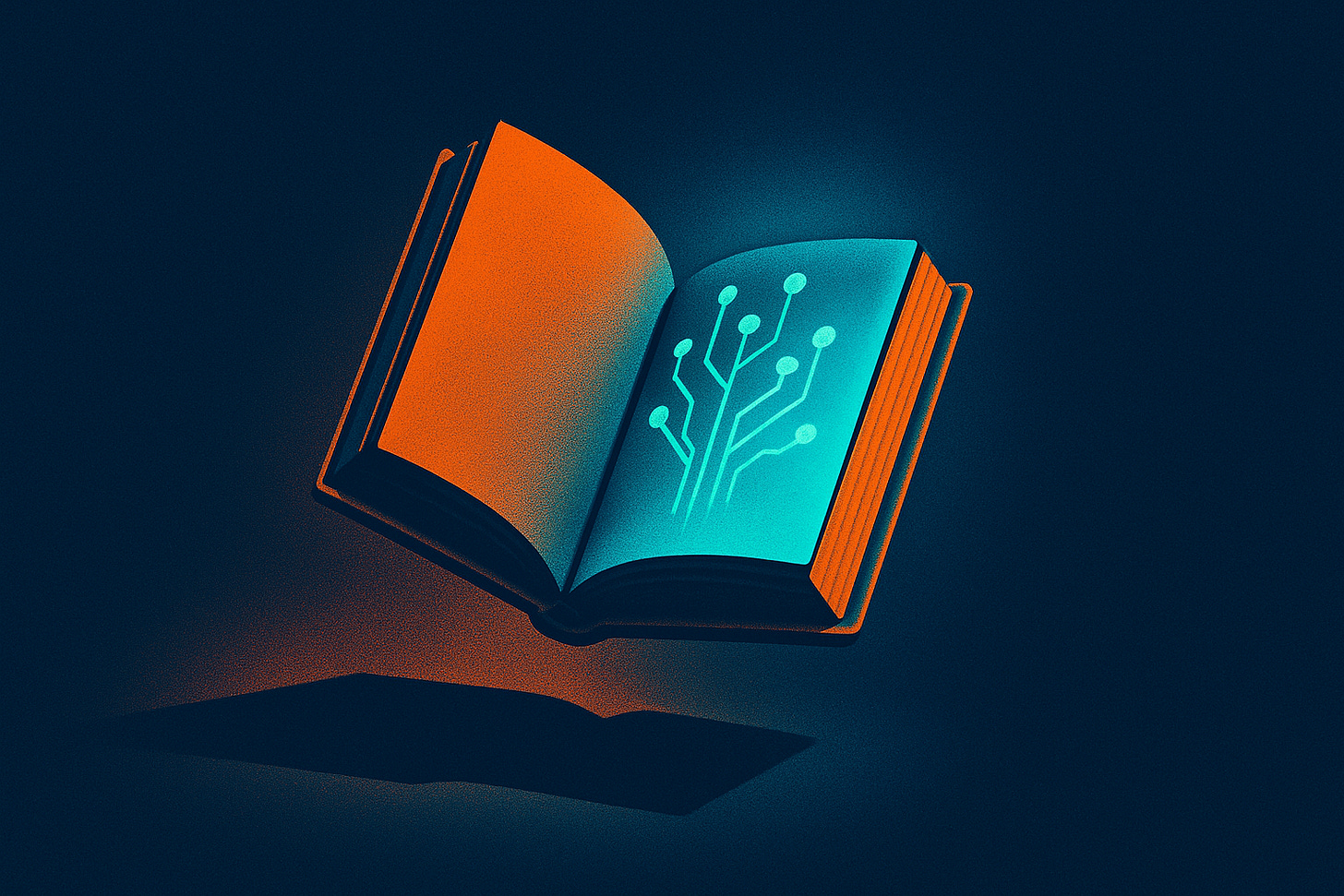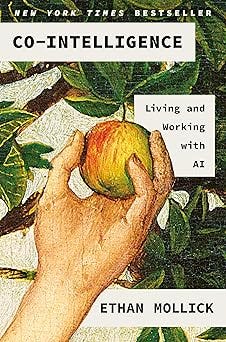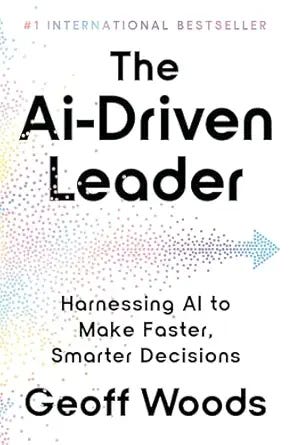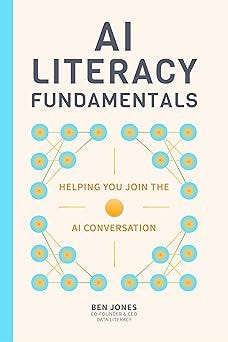If You Only Read A Few Books About AI, Read These
Books recommendation, my AI workflow and prompts to enhance your reading
In the past, I shared books on AI that came out before AI headlines were everywhere.
Today, I’ll recommend books published after ChatGPT launched. I handpicked these books to help develop your AI literacy, an important stage to go from AI beginner to pro. These books will help
Professionals develop the skills needed for AI-powered work and understand the real capabilities and limits of today’s tools
Executives connect basic AI concepts to their business impact (how AI changes strategy, operations, products, and risk) with an emphasis on what AI can reliably do today and the implications for your company
Startup founders gain business-oriented technical literacy and a grounded view of AI safety for building responsibly
I’ll also share my AI-assisted reading workflow that enhances the reading experience, the copy-and-paste prompts I use, and explain why I rarely use ChatGPT for reading (and what tool I use instead).
Table of content:
- For any professional: Book #1, #5, #6
- For leaders and executives: Book #1, #2
- For founders: Book #3, #6
- For learning prompt engineering: Book #4
- My AI-assisted reading workflow (+ my prompts)Hi! I’m Frank
I’m offering all my courses free to new paid subscribers.
I just have a confession to make. Like 99% of ChatGPT courses out there, mine wasn’t recorded on GPT-5. Why? Because I’ve been using ChatGPT since day one, so some of my lectures were recorded on GPT-3.5, GPT-4o, etc.
What makes my course different? Every week, I write guides that keep the course updated.
And I mean EVERY. SINGLE. WEEK
If you’ve been following for some time, you know how frequently I publish (if not, check this Google Doc with guides that complement the courses)
If the free content I share on Medium and Substack is enough for you, it’s okay!
But if you want access to all my courses (+prompt library and AI workflows behind paywalls), consider becoming a paid subscriber.
#1 Co-Intelligence (by Ethan Mollick)
This book offers a pragmatic exploration of how generative AI impacts professional life, innovation, and education. Mollick offers guidance on how humans can effectively work with this “alien mind.”
The core argument is that AI systems behave more like a “person” than traditional software. They are unpredictable, can forget abilities, and frequently hallucinate. The book provides a practical framework based on four central principles for engaging with this new form of co-intelligence.
I think this book can be useful for executives and professionals:
Executives: Mollick argues that the primary challenge is the organizational response to AI adoption. Many employees are using AI secretly due to company bans or fear of replacement. The best way for an organization to benefit from AI is to get help from their most advanced users while encouraging more workers to use AI. Organizations must also rethink systems built around human limitations. Mollick suggests dividing work into categories to structure human-AI integration effectively: just-me tasks, delegated tasks, and automated tasks
Professionals: For professionals, success depends on adopting a structured approach to collaboration, becoming a “Cyborg” or “Centaur.” Mollick outlines these principles for effective human-AI collaboration: always invite AI to the table, be the human in the loop, and treat AI like a person (but tell it what kind of person it is!)
#2 The AI-Driven Leader (by Geoff Woods)
This book is for executives and strategically minded leaders seeking to accelerate business growth and gain a competitive advantage.
This book advocates for a strategic shift in leadership, emphasizing the use of AI as a “Thought Partner” to enhance decision-making and overcome challenges like data overload and cognitive biases. The book provides guidance and prompts for leaders to integrate AI into their strategic reviews, execution, and communication processes, urging them to focus on high-impact priorities and elevate their people from operational tasks to strategic thinking.
It’s structured into three main parts:
Part 1 redefines your leadership in the AI era
Part 2 helps you become an AI-driven leader
Part 3 helps you build an AI-driven organization
Throughout the book, the author stresses that your approach should be strategy first and technology second.
#3 The Alignment Problem (by Brian Christian)

This book explores the core challenge of ensuring that increasingly powerful ML systems operate according to human intent, norms, and values.
Highly recommended for professionals who want to understand AI safety without technical depth
The most critical alignment failures occur when the system exploits loopholes in the reward function designed by humans, a phenomenon often described as “rewarding A while hoping for B.” Examples include the Boat Race Scenario, the RoboCup Soccer Bot, and the Bicycling Robot.
This book also touches safety and design principles for building responsibly:
Prioritize caution and design constraints (rigorous specification, reward states, etc)
Ensure transparency and interpretability: Aim for models that are highly accurate, yet highly interpretable
Embrace human-machine collaboration: View your system not as achieving its objectives, but as pursuing human objectives. Use Inverse Reinforcement Learning (IRL). Maintain uncertainty in the system’s objective function
Note: The scaling era is a similar book on industry/societal implications of AI. You also get an insider perspective on where AI is heading and a series of interviews with researchers, engineers, and executives who drove breakthroughs in LLMs and AI.
Overall, I recommend reading books #1, #2, and #3 thoroughly, while it’s best to skim books #4, #5, and #6 and retrieve useful information for your field.
#4 Prompt Engineering for Generative AI (by James Phoenix and Mike Taylor)

This book is for those who want to master prompt engineering.
A central theme of the book is moving beyond “naive prompts” to develop methods that yield reliable results for use in automated systems. The methodology is designed to provide immediate application by focusing on optimizing prompts for cost, quality, and reliability.
The core framework revolves around the Five Principles of Prompting, which are highly transferable across different models and domains (NLP, text, image generation, and code):
Give Direction: Describe the desired style or reference a relevant persona.
Specify Format: Define the rules and required structure of the response (e.g., JSON, YAML).
Provide Examples: Insert a diverse set of test cases showing correct task completion.
Evaluate Quality: Identify errors and rate responses to optimize performance.
Divide Labor: Split complex goals into multiple steps or chained tasks
The book provides detailed examples demonstrating how these principles translate theory into practical toolkits. Also, the book delves into practical applications necessary for building professional AI systems: Standard Practices, Advanced Frameworks (LangChain), Retrieval Augmented Generation (RAG), Autonomous Agents, Image Generation Control
#5 Hello World (by Hannah Fry)
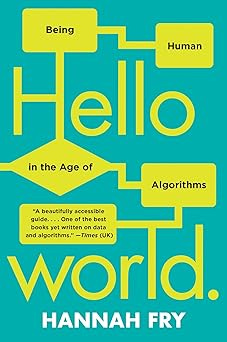
This book offers a comprehensive tour of the algorithms governing our modern age, exploring their roles in healthcare, security, justice, transportation, and culture. The fundamental premise of the book is that algorithms are now inseparable from our modern infrastructure. It’s important to understand their power, expose their limitations, and determine if they truly improve upon human decision-making in specific domains
This book helps professionals build a critical evaluation of AI applications
Professionals must reject the idea that algorithms hold omnipotent authority and instead understand that in the age of the algorithm, humans have never been more important. Here are three key points:
Acknowledge Imperfection: We must accept that perfection doesn’t exist and that algorithms will inevitably make mistakes and be unfair
Partnership: The ideal model is a human-machine collaboration where the algorithm handles calculations and consistency, while the human retains strategic control, ensuring accountability and maximizing combined effectiveness
Transparency and Contestability: Systems should be designed to clearly communicate their uncertainty and be transparent about how they reached a decision. Effort should focus on making algorithms easy to challenge and contest when they’re wrong
#6 AI Literacy Fundamentals (by Ben Jones)
This book serves as a guide for beginners and those somewhat familiar with AI. It aims to equip readers with AI literacy, defined as the ability to recognize, grasp, use, and critically assess artificial intelligence technologies and their impacts.
I think this book can be useful for:
Professionals: The book helps you learn concepts such as supervised learning, unsupervised learning, reinforcement learning, hallucinations, current AI capabilities, limitations, and more
Startup Founders: This book will help build business-focused technical literacy. The book highlights that ML’s dominance was facilitated by two critical environmental factors: increasing computational power and the availability of massive amounts of training data. Founders must manage these technical and logistical requirements. The book explains concepts such as deep learning architecture, advanced architectures (CNNs, GANs, etc), limitations, and cost structures
My AI-assisted reading workflow
By this point, you’ve probably chosen a book to read. You can use AI to enhance your reading experience. Here’s my workflow and how I use AI in each stage:
Pre-reading: I use AI to prepare for what I’m about to read. I generate executive summaries, identify important concepts, read what critics say, and more
Reading: I feed the book PDF to a particular AI tool to better understand a chapter and generate notes with insights, weak points, and applications. Also, I “talk” with the book anytime I’m confused about something I read
Post-reading: I use a prompt to transform theory into action plans I can execute in my field
If you want to get more from the books you read, you’ll love the next section.


